Sintra is one of the most famous towns in Portugal. Its close location to Lisbon makes it one of the most popular day trip destinations for tourists visiting the Portuguese capital. With a fairytale village appearance, this town is known for its palaces, castles and stately mansions scattered on its mountains. Among its main attractions are the Sintra National Palace, the Pena National Palace, the Moorish Castle and the Quinta da Regaleira. If you are thinking of visiting this corner of Portugal, you cannot miss this article with the best things to do and the top attractions in Sintra, Portugal.
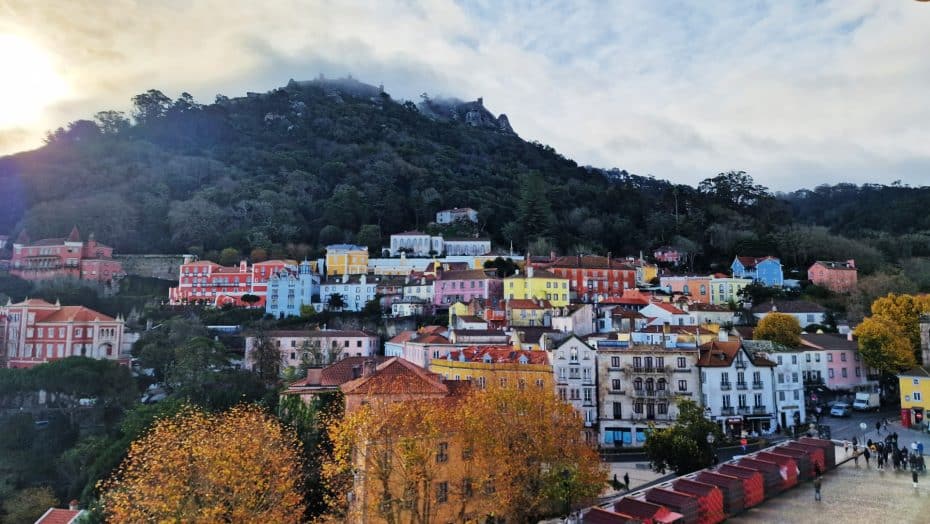
Is Sintra Worth Visiting?
Although most visitors come to Sintra as a day trip from Lisbon, this town offers numerous attractions. It would take many days to truly get to know all its treasures, and you would always have something left to discover in some corner of the town, in its mountains or the coastal area.
And that’s because in addition to its cultural and mountain attractions, the Sintra coast, especially the surroundings of the Sintra-Cascais Natural Park, also has incredible landscapes with high cliffs and huge dune beaches. Some attractions on the Sintra coast include Cabo da Roca and the small town of Azenhas do Mar.
All in all, Sintra’s main attractions speak of a glorious past marked by its rich history. Impregnable castles, royal residences, bourgeoise mansions and colourful houses line its winding cobbled streets and offer spectacular landscapes.
17 Attractions in Sintra, Portugal
This is a list of essential attractions and unmissable things to do in Sintra for a perfect trip to this Portuguese town.
1. Palacio da Pena: The Most Visited Attraction in Sintra
Palácio da Pena is undoubtedly the most famous building in Sintra, and the park that surrounds it is considered the maximum exponent of romantic landscaping in Portugal. Located on Monte da Lua, at the top of the Serra de Sintra, the palace is the product of King Ferdinand II’s imagination.
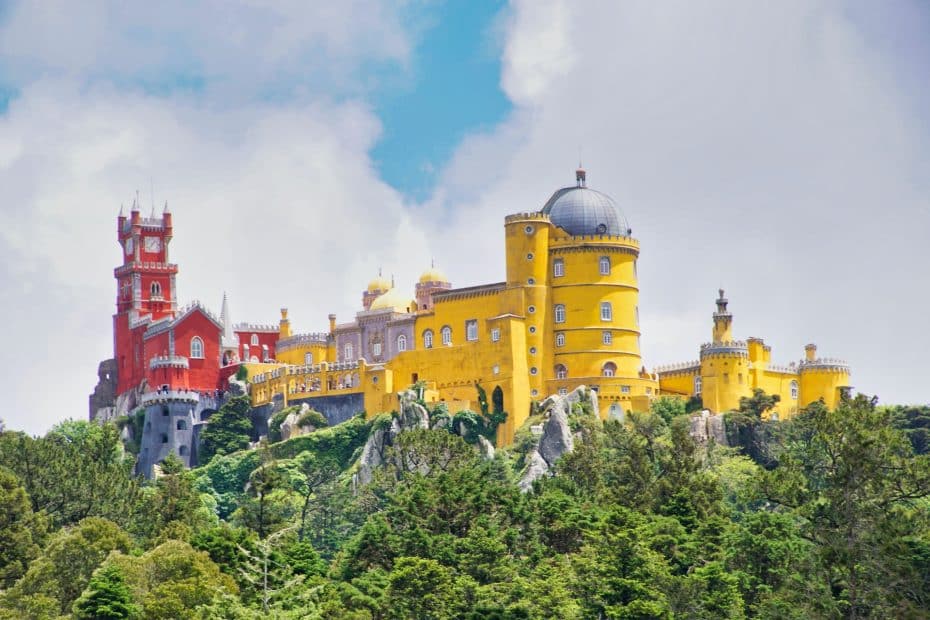
Considered one of the Seven Wonders of Portugal, Pena Palace is one of the best expressions of 19th-century romanticism in the world, especially considering that it was the first romantic palace in Europe, built 30 years earlier than the uber-famous Schloss Neuschwanstein in Bavaria.
The first construction of which there are records on this steep peak of the Serra de Sintra is a small chapel dedicated to Nossa Senhora da Pena (Our Lady of the Feather) during the reign of João II. In the 16th century, Manuel I ordered its reconstruction and expansion to turn it into a monastery of the Order of San Jerome. In the 18th century, a lightning strike destroyed part of the tower, the chapel and the sacristy, and the earthquake of 1755 left the convent in ruins.
In the 19th century, the landscape of the Serra de Sintra and the ruins of the old convent astonished the king consort Fernando II of Portugal, who in 1838 decided to acquire the convent, the Castelo dos Mouros and the surrounding farms and forests with the aim of turning the grounds into a summer residence.
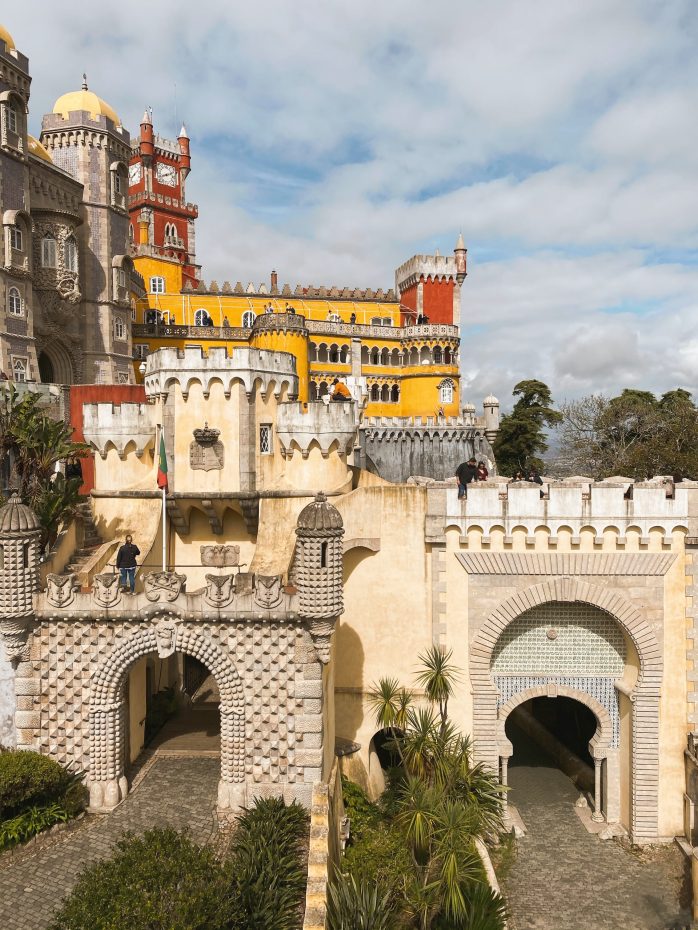
Ferdinand ordered the renovation of the monastery while he designed new spaces for the palace, mixing various architectural references from the time. In addition to medieval elements such as walkways, watchtowers, access tunnels and drawbridges, the palace also incorporates references to Manueline and Moorish influences.
The interior is also home to several different styles. Some of its main features are the Chapel of the Monk, the royal apartments and the beautiful wall paintings.
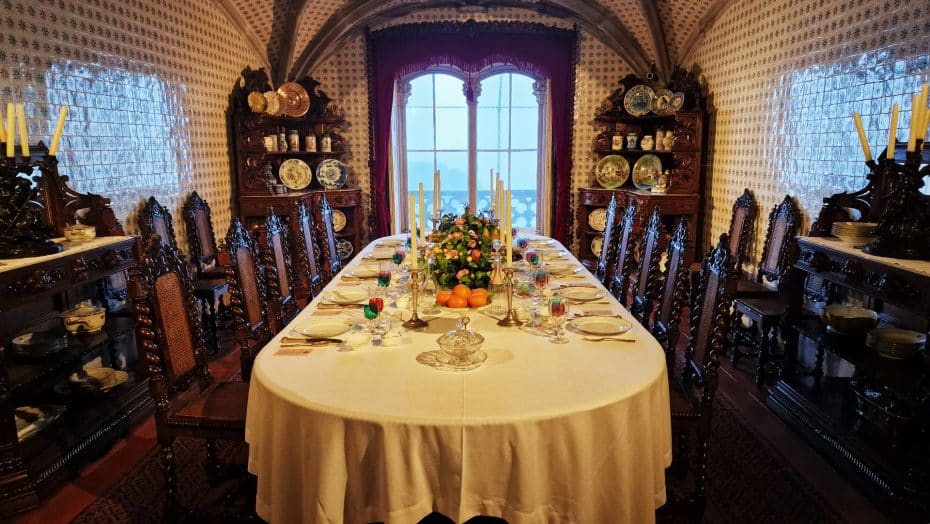
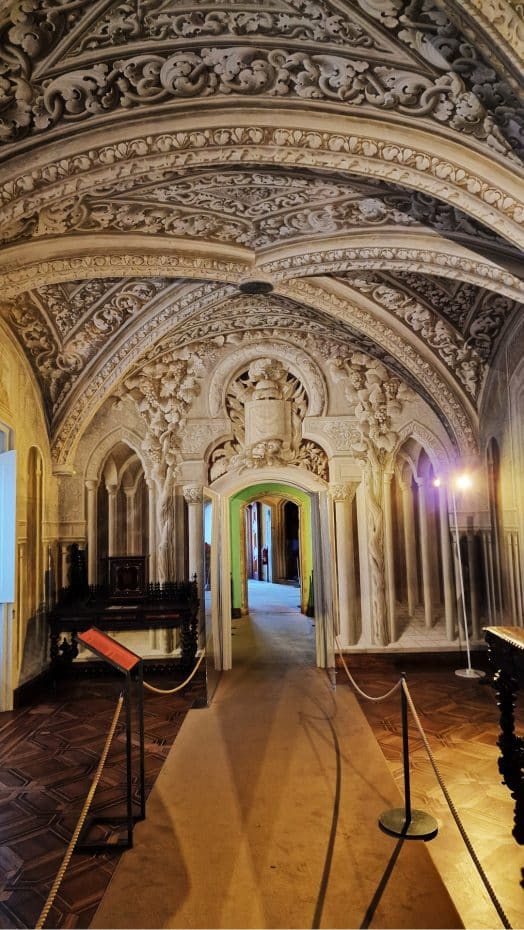
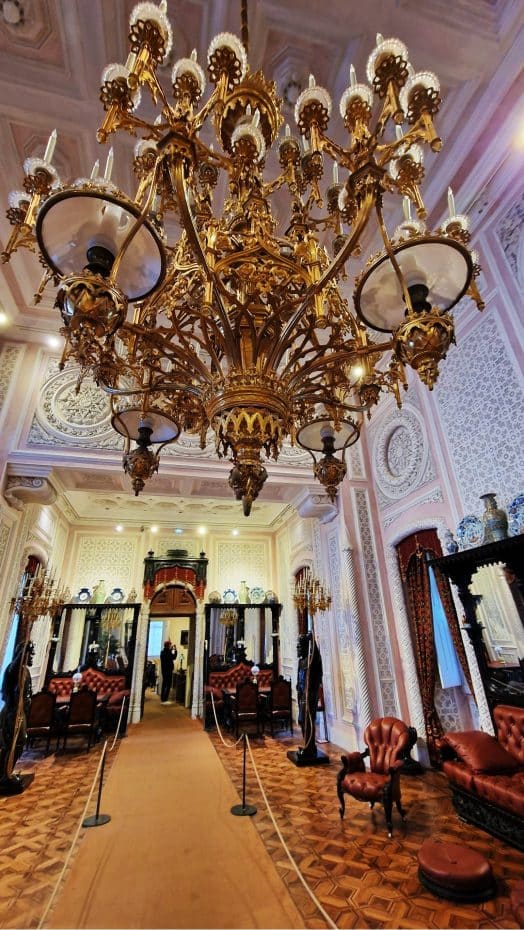
After the king’s death, the palace was left to his second wife, Elisa Hendler, Countess of Edla. This inheritance generated great public controversy, and the building ended up being sold to Luis I of Portugal on behalf of the State. With this acquisition, the Palace became part of the Portuguese national heritage.
In 1995, UNESCO classified the mountains and the historic city of Sintra as a World Heritage Cultural Landscape, the first application of this category in all of Europe.
To visit the Pena Palace, you can drive there, use public transportation, or hire one of the many companies offering guided tours of the site.
During holiday periods and weekends, the palace tends to get very crowded. It is best to arrive early, even before opening, in order to avoid long lines.
2. Quinta da Regaleira: Go Down Sintra’s Mysterious “Inverted Tower”
Quinta da Regaleira and its palace are probably the most enigmatic and mystical places in Sintra.
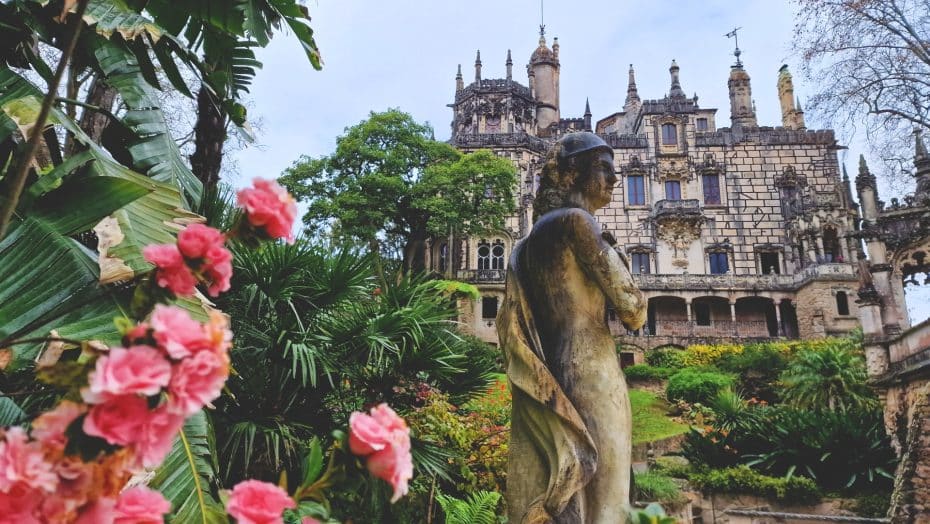
Commissioned at the beginning of the 20th century by António Carvalho Monteiro, an eccentric industrial heir who is also known as Monteiro dos Milhões (of the millions), the building is an example of romantic revivalist style and brings together Gothic, Manueline and Renaissance elements, but also a lot of esoteric symbolism.
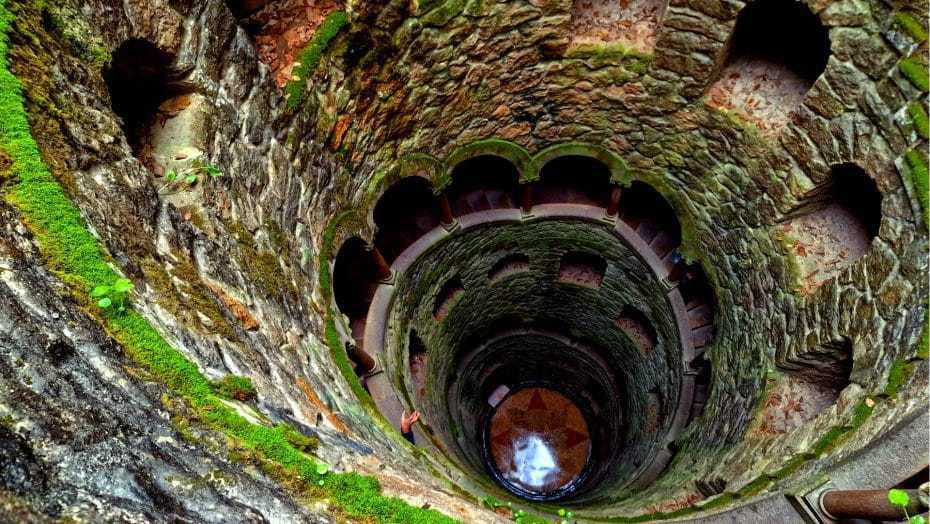
Some of the highlights of the estate, which is covered with lush vegetation, are the Capela da Santíssima Trindade and the famous and enigmatic “initiation well” with its iconic spiral staircase.
3. Palácio Nacional de Sintra: Visit the Portuguese Royal Family’s Ancestral Home
Of Moorish origin, this palace, also known as Palácio da Vila, is in the heart of Sintra and was the residence of the Portuguese Royal Family from the 12th century until the abolition of the monarchy in 1910.
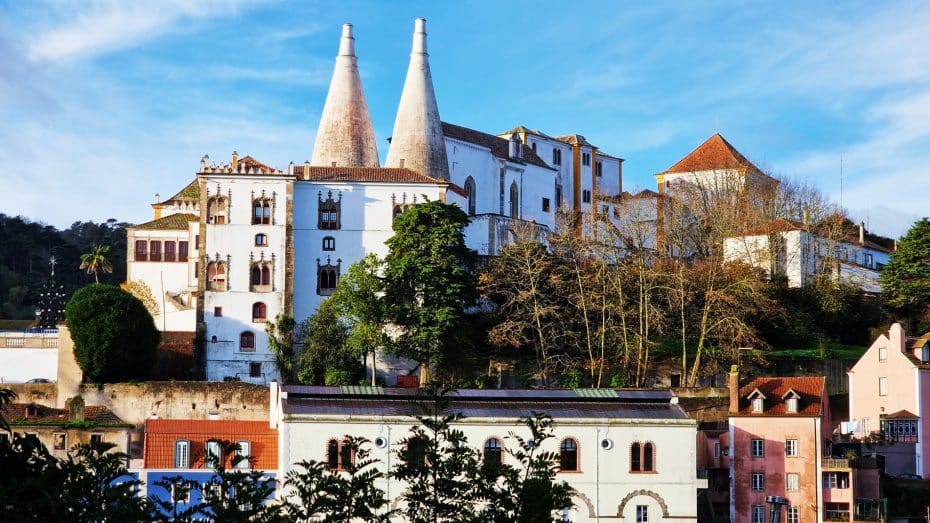
The Palácio Nacional de Sintra is a unique example of a Portuguese medieval palace and exhibits different architectural styles reflecting the tastes of different kings and eras. In its architecture and decoration, you can see elements of influences ranging from Gothic to Mudejar and Manueline.
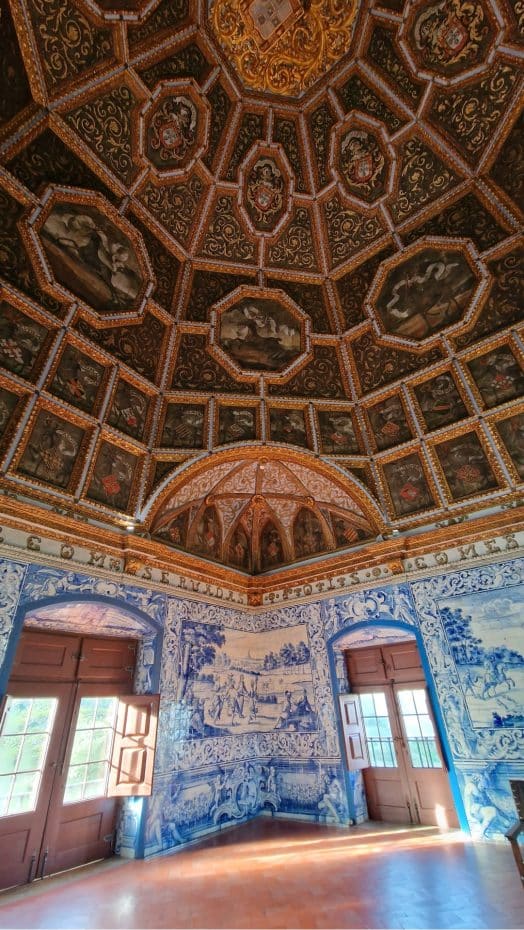
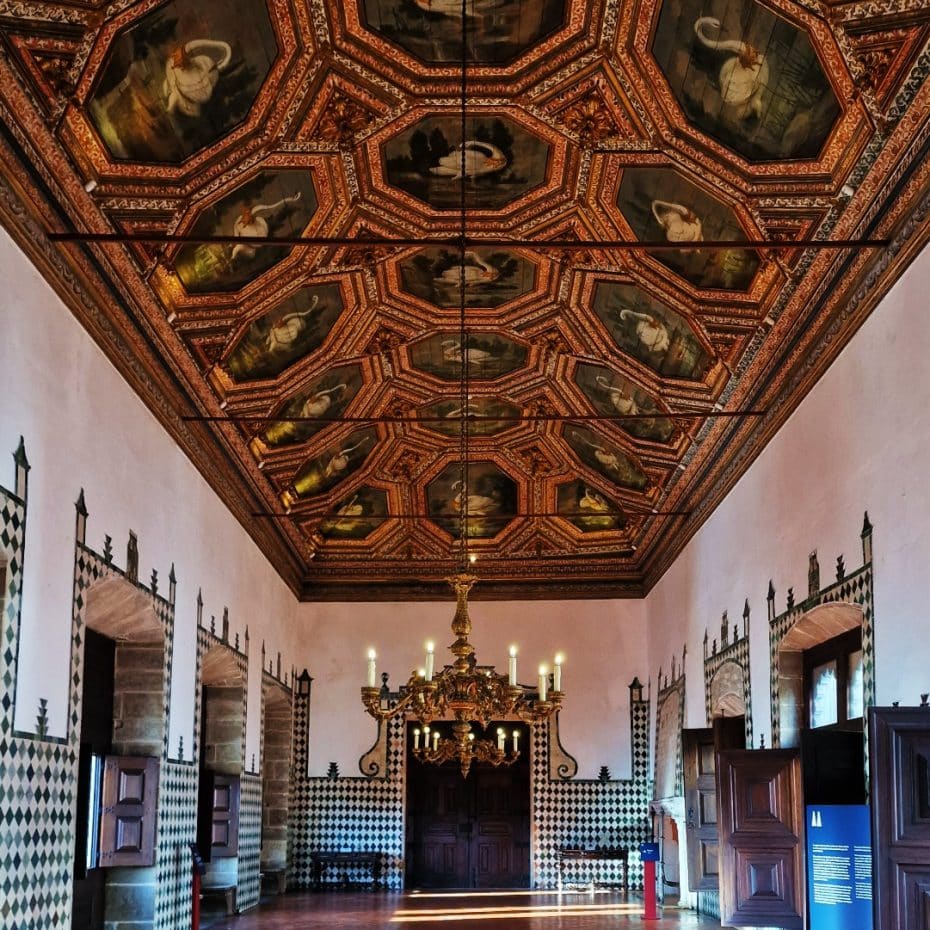
Don’t miss the chapel, the kitchen with its large conical chimneys, and the Swans, Blazons and Crows Halls.
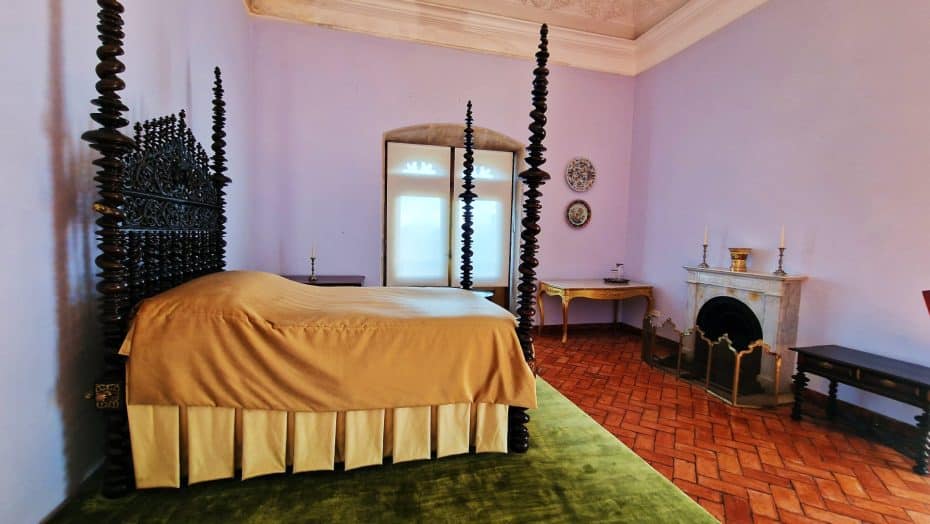
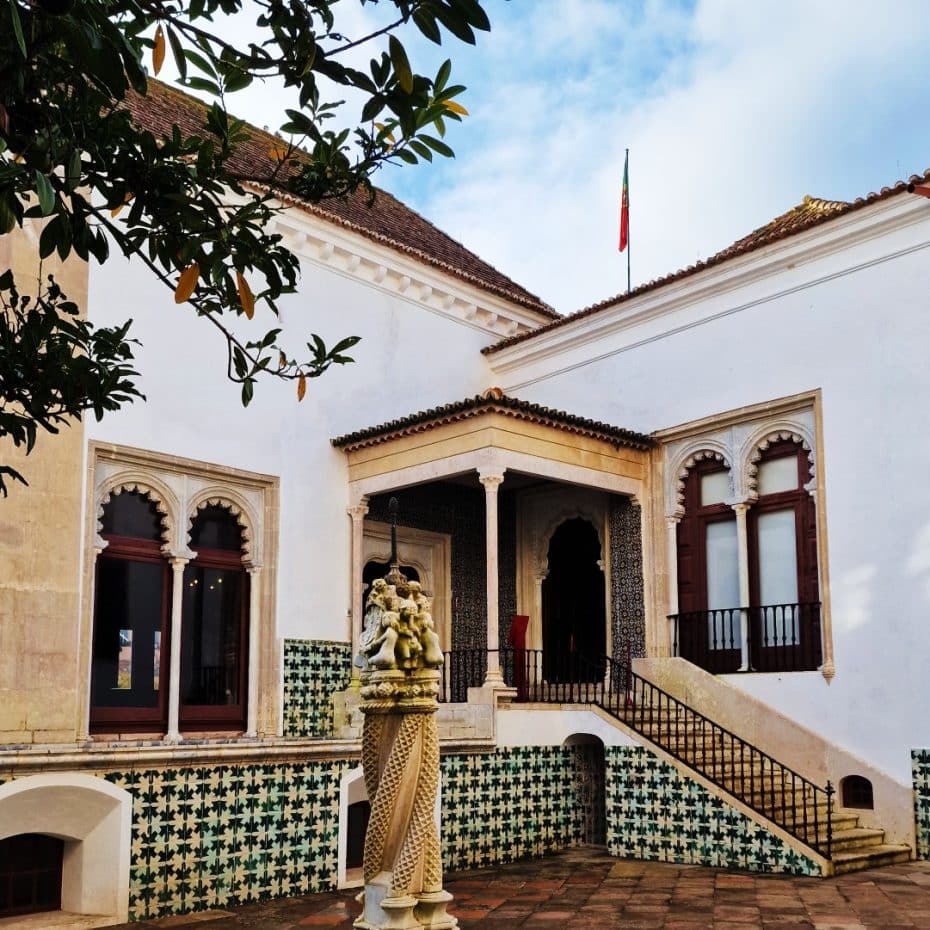
4. Castelo dos Mouros: The Best Views of Sintra
The Castelo dos Mouros (Castle of the Moors) is a privileged point to admire the breathtaking views extending from Sintra to the sea. Winding along two peaks of the Serra de Sintra, the Castle dates back to the beginnings of the Arab occupation of the Iberian Peninsula.
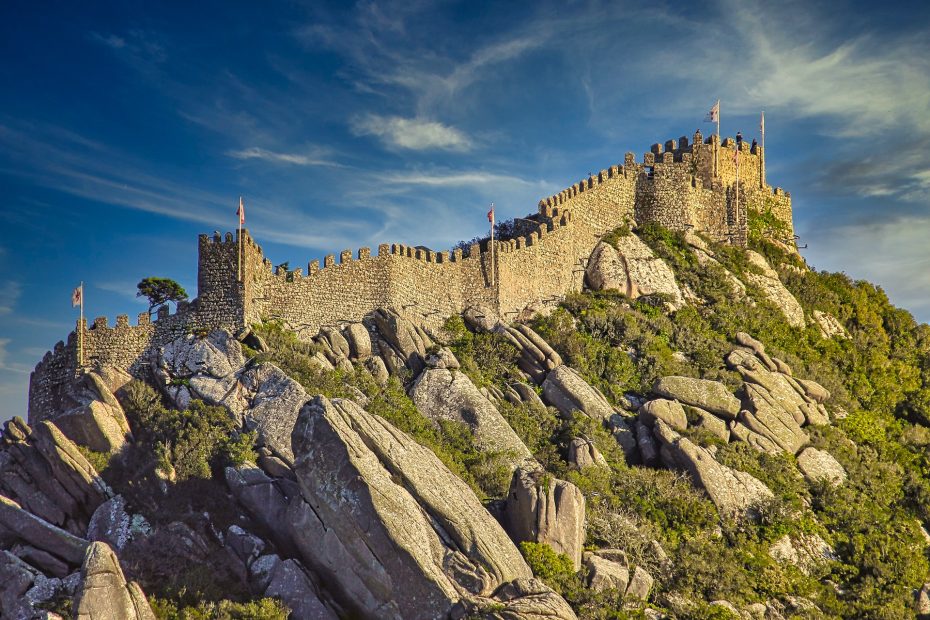
The origins of the so-called Castelo dos Mouros, one of the few examples of military architecture in Sintra, are still not entirely clear. However, most historians place it in the 8th or 9th century AD.
Strategically built on one of the highest peaks, the castle dominates the municipality’s profile on an outcrop of large granite boulders that acts as an insurmountable natural defence to the north.
Structurally, the fortification has a double belt of walls (the outer one is partially destroyed) and is irregular in plan. It covers about 12,000 m2. Inside it, we can see the ruins of what used to be silos, stables and a rectangular cistern. At the northern end, hidden in the wall, among brambles and other vegetation, is the famous Porta da Traição (Gate of Betrayal).
5. Palácio de Monserrate: An Unexpected Architectural Gem
Located in the Parque de Monserrate, 4 km from the historic centre of Sintra, Monserrate Palace was built in 1858 in an area steeped in history.
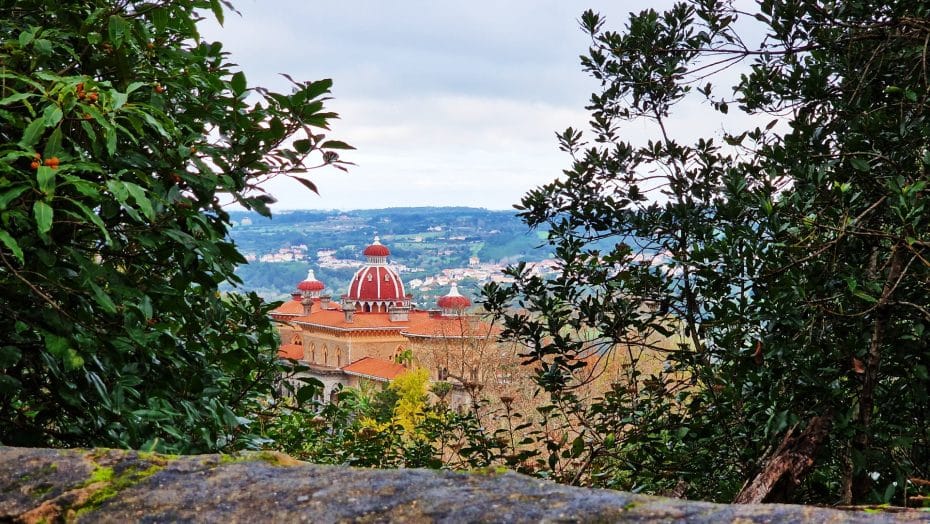
The English architect James T. Knowles was responsible for the innovative design of this palace, the summer residence of the Cook family.
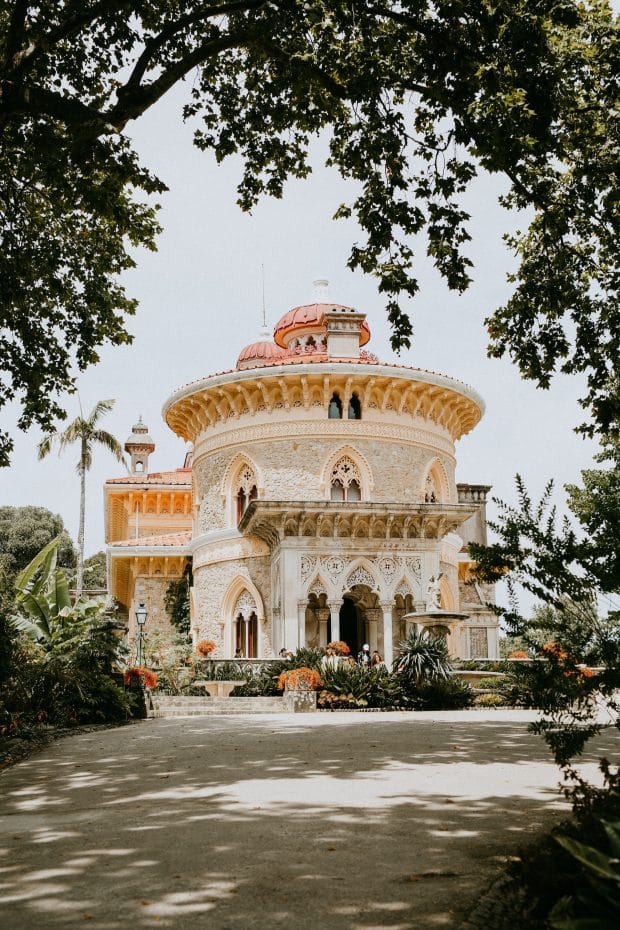
Built on the ruins of an old mansion, the Monserrate Palace was built in an eclectic style with an incredible mix of architectural influences including neo-Islamic, neo-Gothic and Indo-Gothic elements.
The interior houses elegant and sumptuous spaces such as the gallery (the corridor that connects the three towers of the palace), the music room, the dining room and the library.
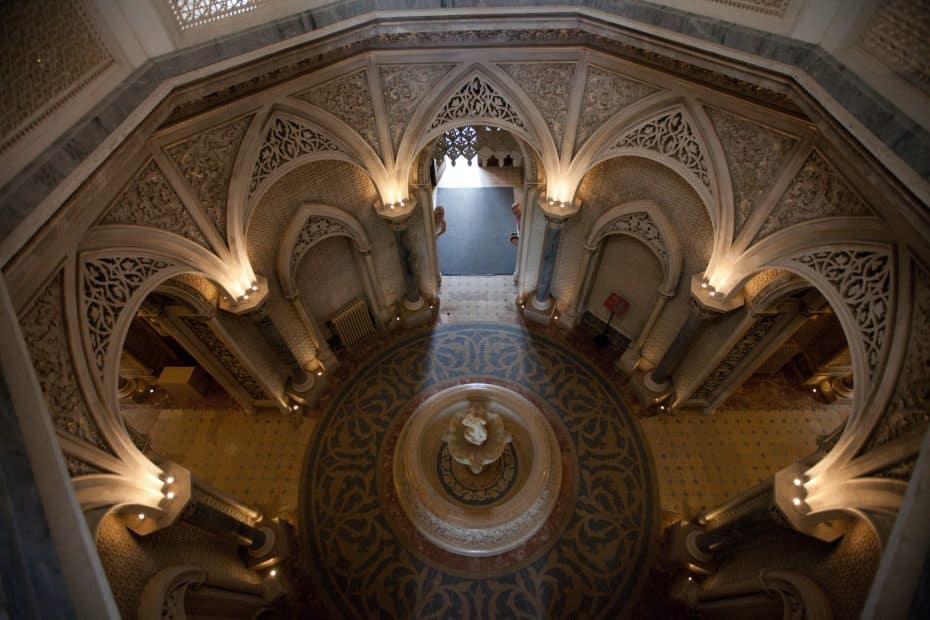
Surrounding the palace, Monserrate Park houses a remarkable botanical collection of species from all over the world mixed with native vegetation. It is over 50 hectares in size and includes the Valley of the Ferns, from Oceania, and the Valley of Mexico, artificial lakes and a huge araucaria tree over 45 meters high.
6. Sintra Town Centre: Get Lost in its Fairytale Charm
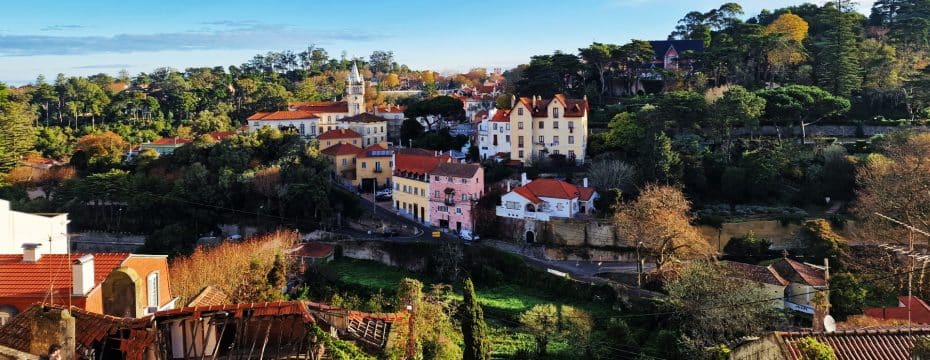
If you arrive in Sintra early in the morning, you should first treat yourself to a walking tour of the Old Town.
It is best to walk around the town centre early when the city is still waking up before the late-morning and midday tourists arrive.
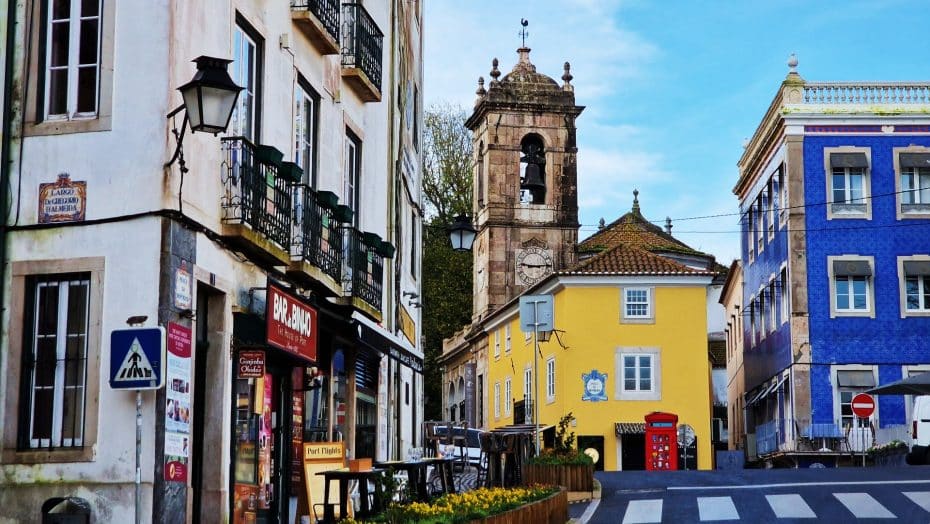
Sintra’s compact historical quarter meanders through a steep valley and has winding cobblestone streets, narrow stairways, churches, beautiful mansions, and townhouses.
Some of its buildings house small museums, such as the Museu Anjos Texeira or the Museu de História Natural, and others can only be admired and photographed from the outside.
This district is among the best areas to stay in Sintra.
Several tour companies offer guided tours of Sintra and its palaces. Due to the large influx of tourists, most tours offer English-speaking guides. Some of the top-rated guided tours in English include:
7. Portuguese Cuisine: Experience it in One of Sintra’s Many Restaurants
After touring the town and going up and down mountains, you will surely have worked up an appetite!
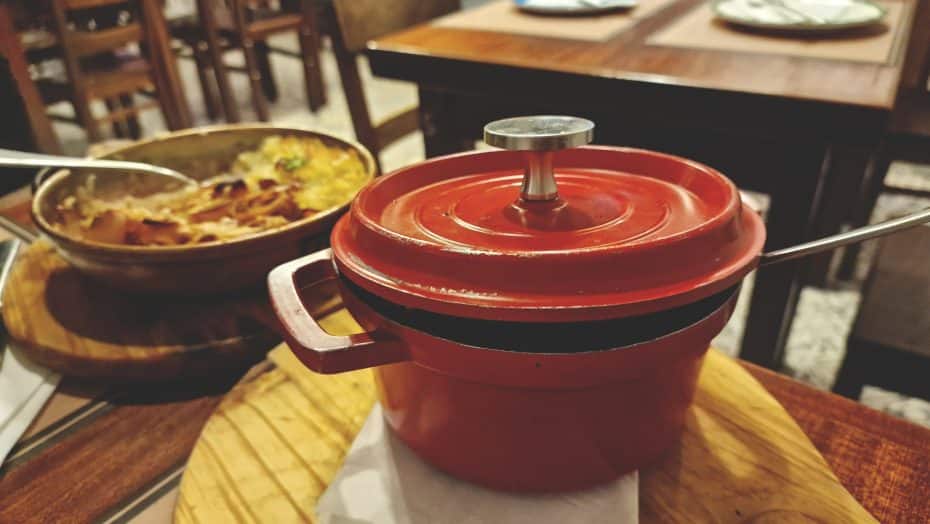
When choosing a table to recharge your batteries, it is best to choose a classic option close to the centre, where you can find excellent tapas bars, mountain restaurants, and places faithful to the Portuguese gastronomic tradition of fish and shellfish.
Depending on what you’re in the mood for (and your budget), here are some restaurant options in Sintra:
- Tascantiga: Laid-back restaurant with tapas and sandwiches, plus wine, beer, and tables on the terrace. Escadinhas da Fonte da Pipa 2, 2710-557 Sintra, Portugal.
- Taverna dos Trovadores: Typical Portuguese food away from Sintra’s tourist hustle. Praça Dom Fernando II 18, 2710-483 Sintra, Portugal.
- Caricato: Cheap, cosy and relaxed restaurant with an excellent daily menu, quality products, and a nice touch of family cooking. Very local. Estr. da Me. de Deus, 2710-165 Sintra, Portugal.
- Sabores do Mercado: Very good option if you are looking for something more exclusive. Wonderful atmosphere and amazing fresh food. All ingredients are locally sourced, and the wine list is excellent. R. Tomé de Barros Queirós 15, 2710-624 Sintra, Portugal.
8. Sintra’s Famous Pastries: Queijadas & Travesseiros
After lunch, be sure to stop at a pastelaria (bakery) to try one of the famous Sintra sweet treats.
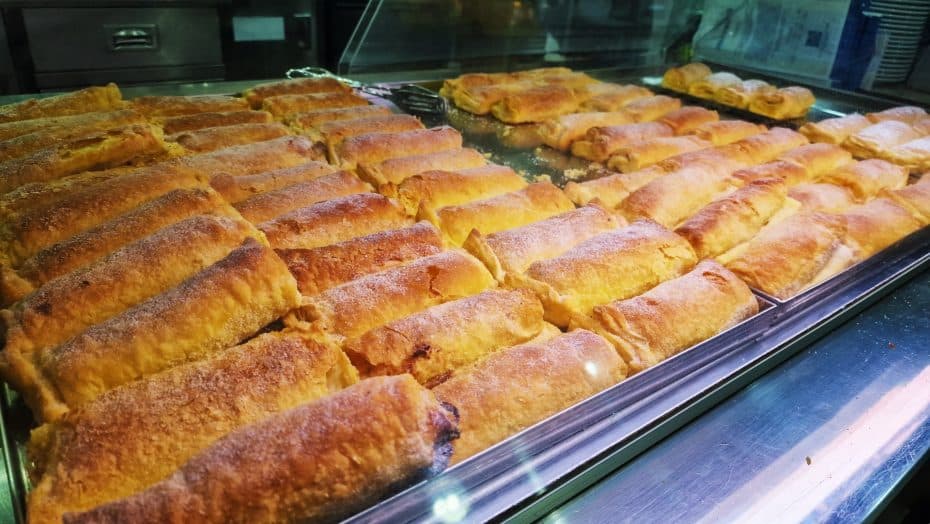
The most famous examples of these sweets are travesseiros (made with puff pastry, egg yolks, almonds and sugar) and queijadas (made with a combination of cheese, eggs, milk, flour and sugar and with a fluffy crust on top).
Although several pastry shops in the city bake and sell these typical Sintra pastries, the best-known is undoubtedly Casa Piriquita, which has two locations in the historic centre (Rua das Padarias 1 and Rua das Padarias 18). Here is their official website.
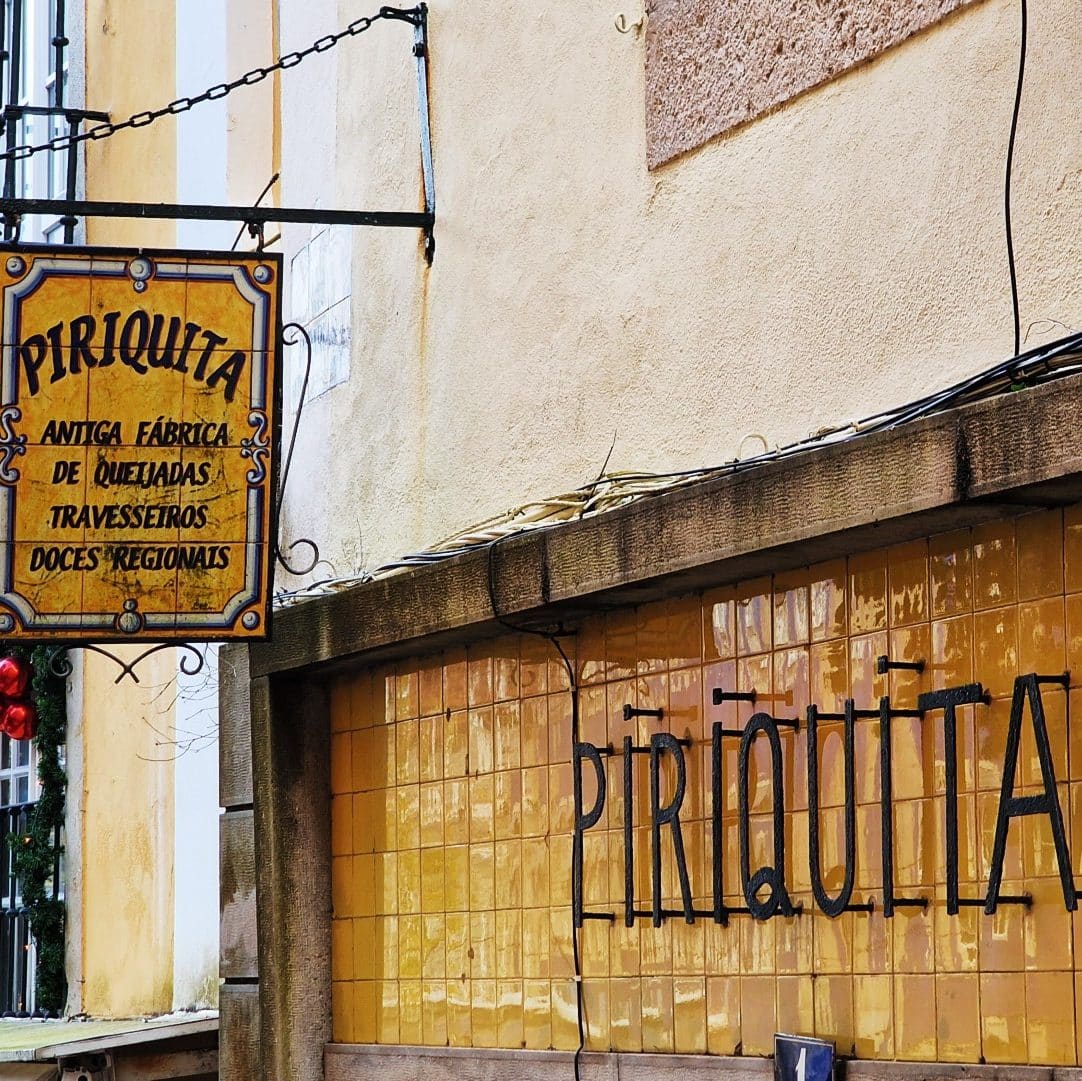
9. Parque da Liberdade: Relax in Nature
Sintra’s Parque da Liberdade is one of the most visited natural spaces in the region.
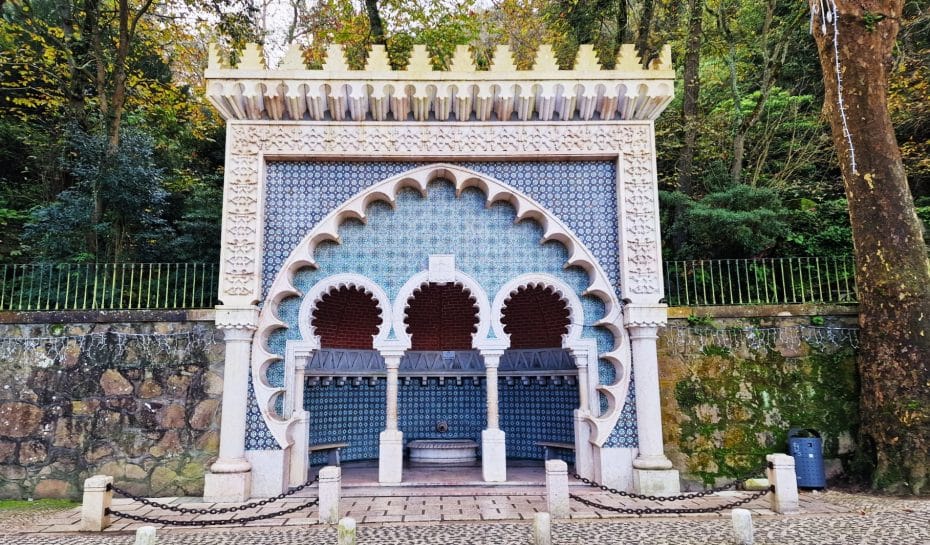
The park has a wide variety of plants from around the world and is a place where you can walk, enjoying its natural beauty. It has an imposing romantic-style entrance, but what stands out are its more than 60 species of plants.
The Parque da Liberdade is the ideal option for those who want to take a walk to relax at the end of the afternoon after a tiring day or for anyone who wants to do some kind of outdoor activity, whether it’s walking, running or even enjoying a picnic.
10. Palácio de Seteais
Built in the 18th century, it currently houses one of the most emblematic and surprising hotels in Sintra: Tivoli Palacio de Seteais, part of the prestigious Leading Hotels of the World.
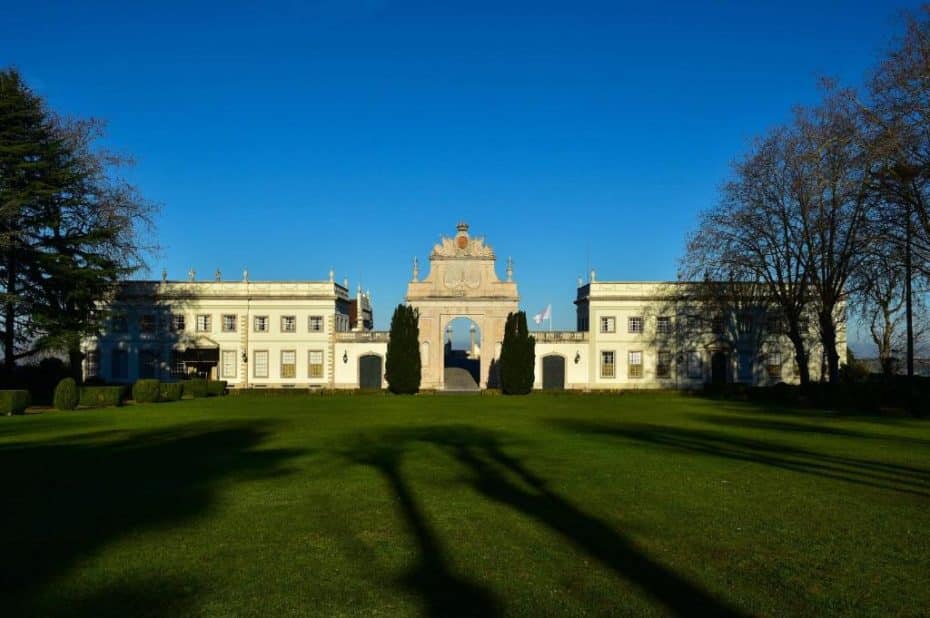
Perched on the side of a mountain, the Seteais offers incredible views from the Palácio da Pena to the sea.
The palace was originally built for the Dutch consul Daniel Gildemestre, and after his death, it was acquired by D. Diogo José Vito de Menezes Noronha Coutinho, Marquis of Marialva.
In an eminently neoclassical style, Seteais is part of the group of mansions and palaces of Sintra. The entrance, with triangular pediments, sash windows and a two-armed staircase that extends inwards towards the secondary façade, is a must-see.
You can also see the palace’s adaptation to the area’s irregular geography.
Its labyrinthine gardens are also impressive and romantic.
11. Sintra’s Historical Accommodations
The Seteais Palace is not the only historic hotel in Sintra.
In fact, the city is packed with historic hotels, palatial guest houses and old villas, which have been converted into accommodation properties.
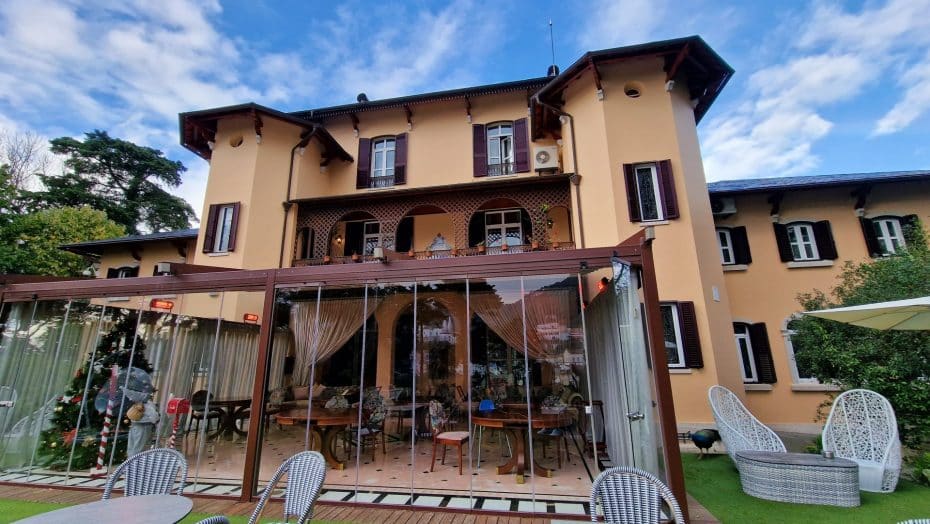
After all, for most of its history (and even today), Sintra has been one of the most prosperous towns on the Iberian Peninsula, the residence of some of the wealthiest people in Portugal. Over the decades, many of the county’s grand mansions have been converted into accommodations, many (though not all) luxurious boutique establishments with all kinds of amenities.
During our last visit to the town, we were lucky enough to stay at the Sintra Marmoris Palace, a luxury, boutique-style guest house located in an old palatial quinta overlooking the Castelo dos Mouros and Sintra National Palace.
Sleeping in one of Sintra’s historic hotels can turn a great trip into an unforgettable experience. Fortunately, the town has several heritage accommodations. You will be surprised to learn that their prices are quite affordable, especially if you book in advance and/or outside of high season.
Some of the best historic properties to stay in Sintra include:
12. Cabo da Roca: Visit the Edge of the World
Cabo da Roca is a beautiful cliff rising some 140 metres above the Atlantic. It is considered the westernmost point of Portugal and all of continental Europe.
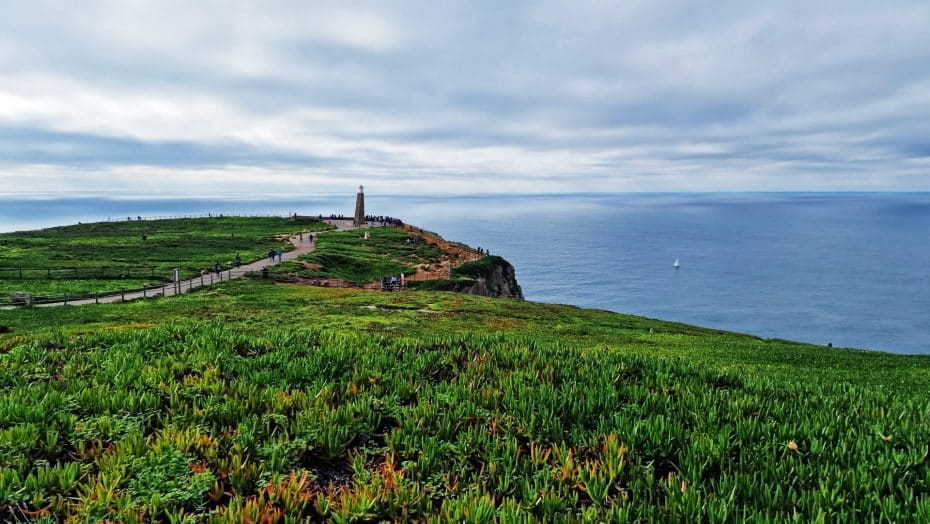
This geographical feature is about 18 km from the centre of Sintra and is surrounded by small fishing villages hidden among the forests of the natural park.
The windswept cliffs of Cabo de Roca were considered the end of the world until the Portuguese explorations in the late 14th century, and its dramatic, desolate landscape offers splendid views.
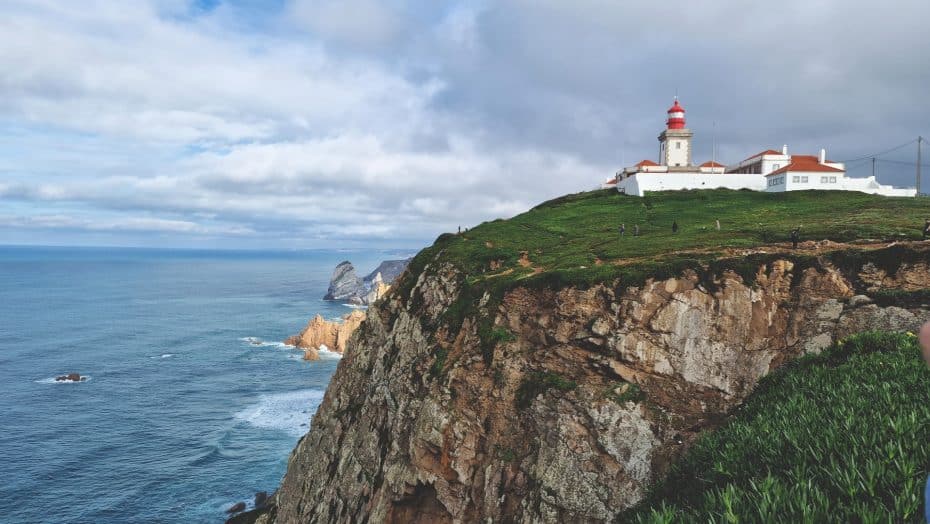
The raging waves of the Atlantic Ocean crash against the base of the enormous and precipitous cliffs while challenging hiking trails run parallel to the coast.
- When visiting Cabo da Roca, be sure to bring warm clothes as the wind is extremely strong, and the gusts of humid air from the Atlantic can make temperatures drop, even in summer.
- If you want to get to Cabo da Roca by public transport, bus line 403 (Sintra – Cascais) covers this route. The bus leaves from Sintra station and takes 35 minutes to get there. If you continue to Cascais, the journey takes an additional 20 minutes. Before boarding the bus, make sure it stops at Cabo da Roca, as many go directly to Cascais.
- The easiest and most convenient way to get to Cabo da Roca is by rental car.
13. Serra de Sintra: Walk in Nature
Serra de Sintra is located between the towns of Sintra and Cascais, in the westernmost part of the European continent. This mountain range covers about 16 kilometres and was known in the Ancient World as “Lunae Mons” (Mountain of the Moon), the retreating place of the mythical goddess Diana Huntress.
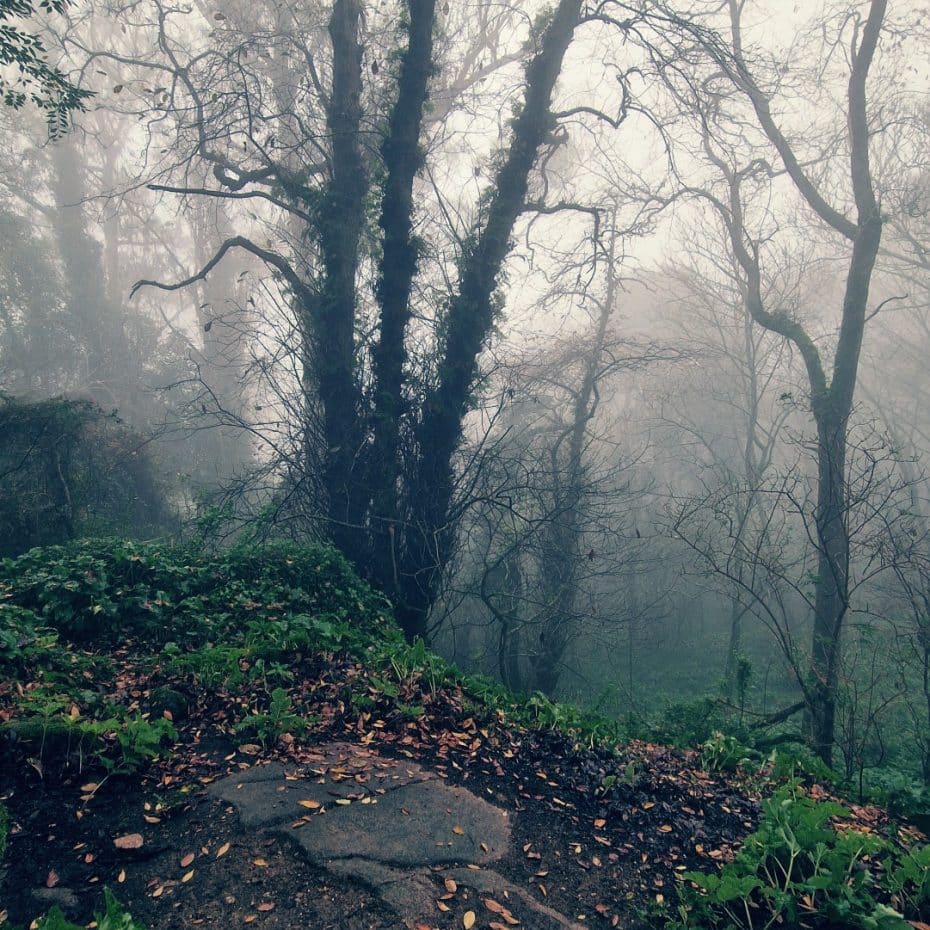
The mountain range is part of the Sintra-Cascais Natural Park, known for its rich fauna, temperate climate and tourist infrastructure. Some of the main tourist attractions of Sintra are found in the Serra, so you can organize your route based on the Sintra sights you want to visit.
Keep in mind that the Serra de Sintra is divided into two landscapes; an extensive agricultural area north of Colares that covers the São João das Lampas plateau, and a coastal strip between the mouth of the Falcão River and the Citadel of Cascais, which ends at Cabo da Roca. The physical intensity of its paths and the rugged terrain means that most of the trails in Sintra have medium to high difficulty.
Our recommendation is to take the path that connects the Pena Palace with the Moorish Castle, from there to the Church of Santa María and the town centre, passing through some of the most emblematic country houses and estates in the region.
14. Palácio Biester: Sintra’s ‘Newest’ Historical Attraction
The Biester Palace is another of the 19th-century treasures to be discovered in Sintra. Recently restored, this stately chalet opened its doors to the public for the first time in 2022.
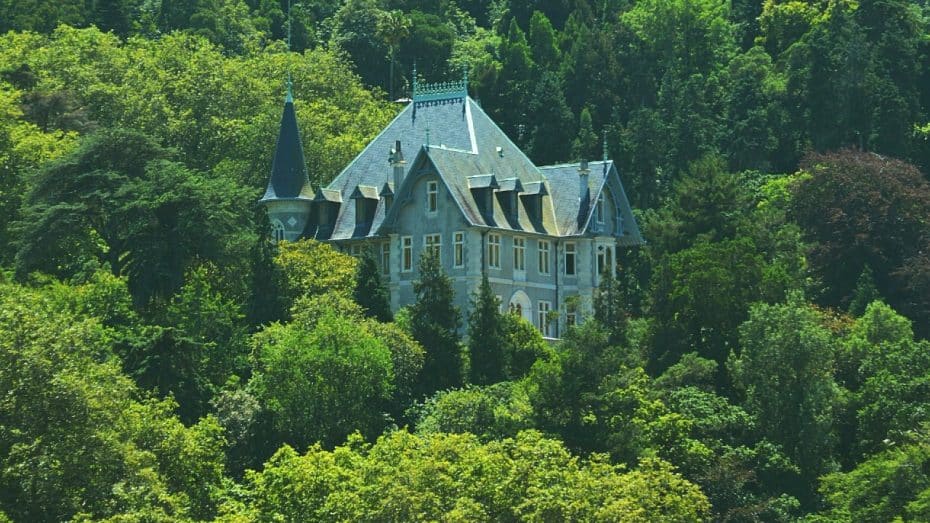
The construction of this palace, the residence of the Biester family, dates from 1899 and mixes neo-Gothic and romantic influences.
If this chalet looks familiar to you, it may be because it is where the movie “The Ninth Gate” was filmed. Starring Johnny Depp and directed by Roman Polanski, this thriller is based on the 1993 novel by Arturo Pérez-Reverte, “El Club Dumas”.
15. Chalet da Condessa d’Edla: One of Sintra’s Best Kept Secrets
Built in the 19th century by King Ferdinand II for his second wife, the Countess of Edla, this palace follows the model of an alpine chalet.
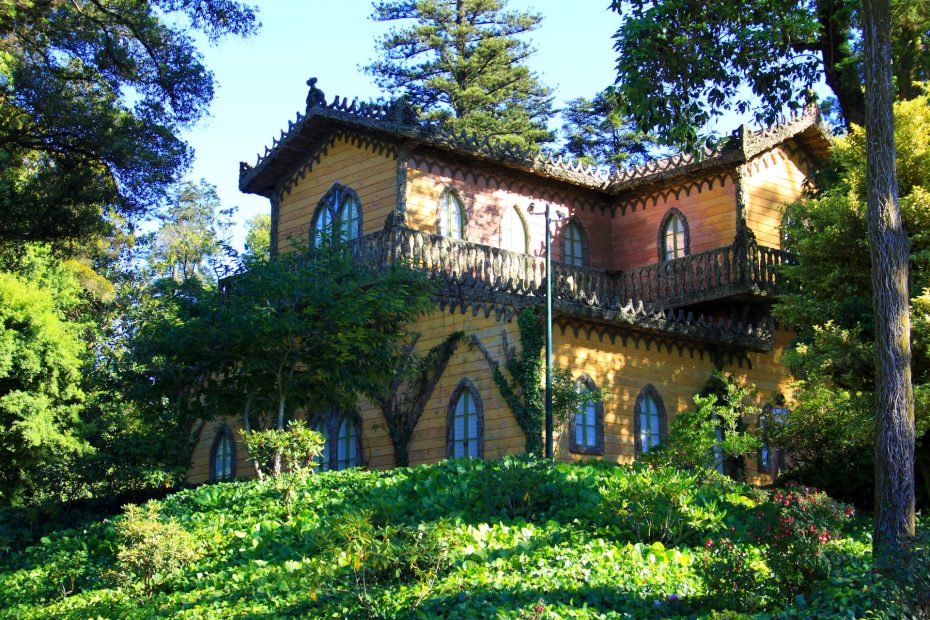
Inside, its stucco murals, as well as the covering of the walls with cork and wood panels, are a must-see.
The garden, with a romantic ambience, has a botanical collection with hundreds of species among native vegetation and exotic specimens from all over the world.
16. Convento dos Capuchos: Escape the Tourists in this Lesser-Known Sintra Attraction
The Convento dos Capuchos (Convent of the Capuchins) is a humble monastery where friars lived in austerity and the purest isolation.
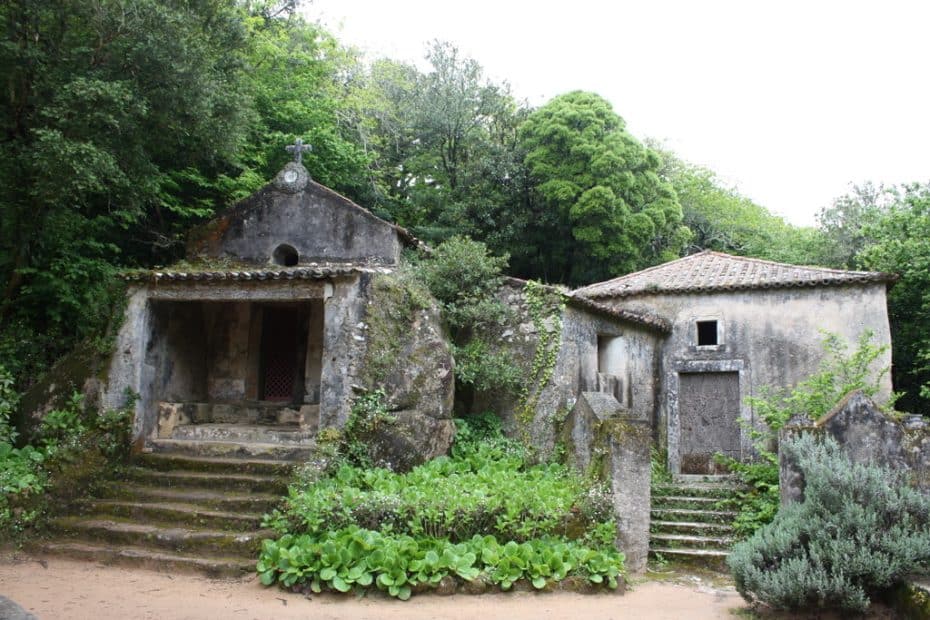
Built in 1560, the convent had a capacity for 8 monks who left behind all kinds of material goods and favoured spirituality.
In this convent, you can visit the tiny cells carved in stone and lined with cork where the monks lived, the chapel, the kitchen and other rooms.
In the back of the convent, you can also discover the cave of Fray Honório, who, according to legend, stayed there for 3 decades.
17. Beach Towns around Sintra
With many kilometres of coastline, Sintra’s municipality has numerous beaches worth visiting, despite their cold waters and strong waves.
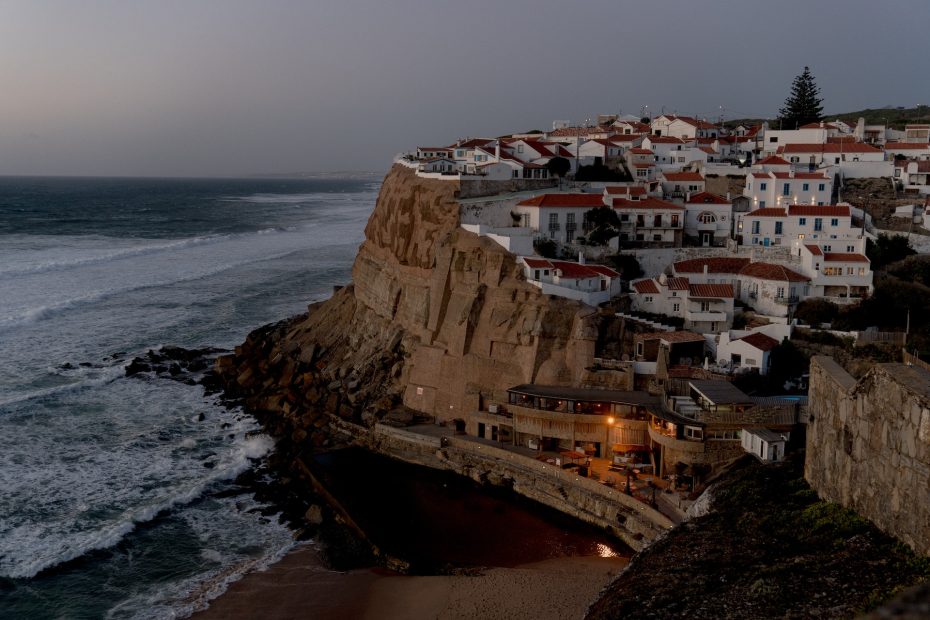
Among the most famous are Praia Grande, Praia das Maçãs and Praia da Adraga.
Other lesser-known beaches are Aguda, Samarra and São Julião beaches, while the most inaccessible is Praia da Ursa, next to Cabo da Roca.
You can also visit one of the most beautiful villages in Portugal, Azenhas do Mar, with its houses built along the hillside.
Read this post in other languages:
|ES| Qué ver en Sintra: Las mejores atracciones en esta localidad portuguesa.



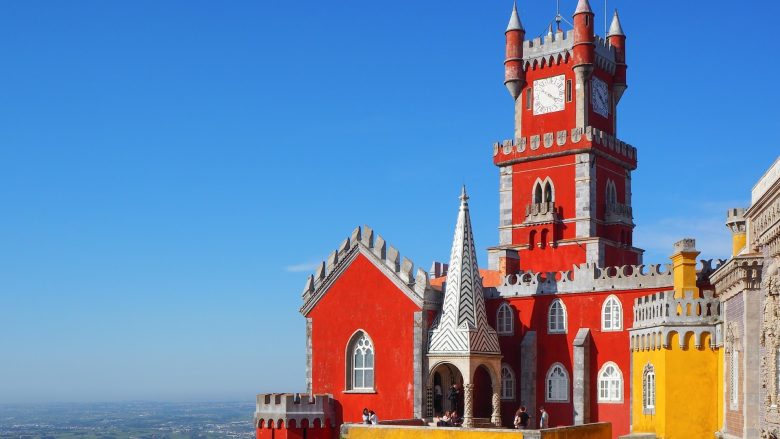
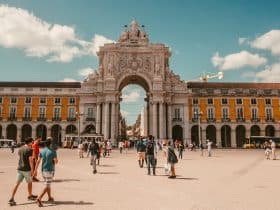
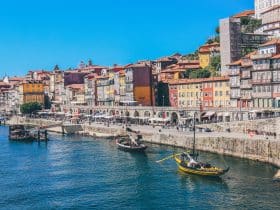
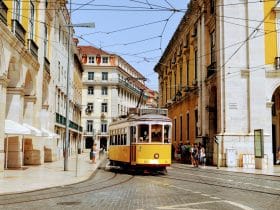
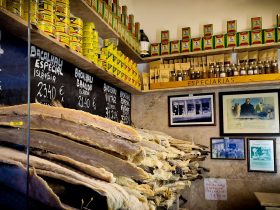




















Leave a Reply
View Comments